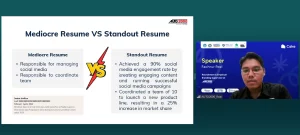Shrimp farming in Indonesia has increased dramatically in the past decade to export between 220,000 and 260,000 tons in 2018. A total of 60%, 19%, and 5% of shrimp production were shipped to the United States of America, Japan, and the European Union, respectively. Furthermore, among the shrimp exported in 2018, around 80% was L. vannamei (Rubel et al., 2019). In 2001, Indonesia officially introduced L. vannamei as the primary culture species to replace the previous Penaeus monodon (Hanggono et al., 2019). The former native P. monodon declined because of the abrupt eruption of diseases such as white spot disease. L. vannamei has advantages over P. monodon due to its fast growth and high resistance to diseases (Mahasri et al., 2019), it can be cultured in high stocking density, it has a high selected viral-pathogen-free domesticated broodstock supply, lower demand for dietary protein, more effective use of plant proteins in formulated diets, greater adaptability to low salinity, better tolerance to ammonia and nitrite toxicity, and high larval survival and lower susceptibility to formulated diets (Biju et al., 2016; Liao and Chien, 2011).
Enterocytozoon hepatopenaei (EHP), a microsporidia parasite known to hinder shrimp growth by infecting its hepatopancreas, is recently an emerging infection for Litopenaeus vannamei farms in Indonesia. Recently EHP is an infection that appears and attacks vaname shrimp, especially in intensive and super intensive ponds in Indonesia. Shrimp cultivation with high stock solids both intensive and super intensive can cause limited wiggle room of shrimp, rest of feed and high feces, thus causing high organic material. If there is a decrease in oxygen, the process of dismantling organic materials will be hampered and cause high levels of Nitrite (NO2) and ammonia (NH3) which can cause shrimp poisoning and even cause death. Thus, this study was conducted to investigate nitrite and ammonia’s correlation in influencing EHP infection in super-intensive ponds. Shrimps and water samples were collected from six ponds in aquaculture super-intensive ponds with a stocking density of 5,000 shrimps in each pond which is located in Pasuruan, Lamongan, and Tuban Regency, Indonesia. The water sample was taken to the laboratory for the measurement of ammonia and nitrite. The samples of ammonia and nitrite were detected by spectrophotometer, and the PCR was used to detect 18S rRNA of EHP. The PCR analysis that showed two positive samples of L. vannamei, from the ponds with a high concentration of ammonia and nitrite, were infected by EHP.
The statistical analysis showed a significant correlation between ammonia and nitrite with the prevalence of EHP infections, where the Pearson correlation (r) was 0.980 and 0.943, respectively. There was a high prevalence of EHP infection with the increase in nitrite concentration and ammonia in pond four and pond six.
The concentration of over 1mg/l of ammonia and nitrite could influence EHP infection prevalence in the shrimp farms.
———————————————–
Author: Dr. Gunanti Mahasri, Ir., M.Si.
Department of Aquaculture, Faculty of Fisheries and Marine Sciences, Airlangga University
More detailed information from this study can be found in the following scientific journals:
Nkuba, A. C., Mahasri, G., Lastuti, N. D. R., & Mwendolwa, A. A. (2021). Correlation of Nitrite and Ammonia Concentration with Prevalence of Enterocytozoon hepatopenaei (EHP) in Shrimp (Litopenaeus vannamei) on Several Super-intensive Ponds in East Java, Indonesia. Jurnal Ilmiah Perikanan dan Kelautan, 13(1):58–67. http://doi.org/10.20473/jipk.v13i1.24430.









